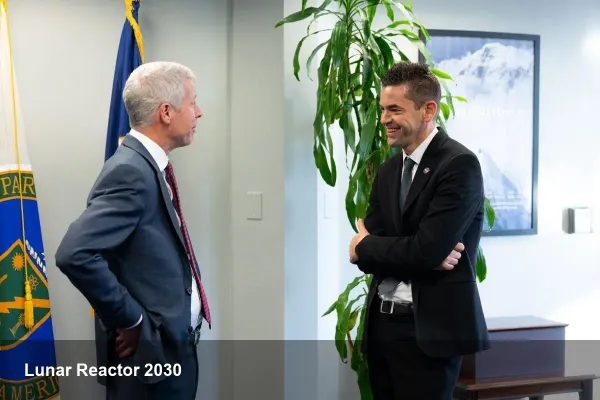Learn about Global Warming its effects on the Atmosphere
The fourth annual report of the international organization The Intergovernmental Panel on Climate Change (EPCC) clearly indicates that global climate change is slowing down.

The fourth annual report of the international organization The Intergovernmental Panel on Climate Change (EPCC) clearly indicates that global climate change is slowing down. The average temperature of the atmosphere and oceans is increasing day by day which is called global warming. From the nineteenth century to the twenty-first century, the average temperature of the Earth was 0.8°C. Which is two-thirds higher than during the nineteenth century.
What causes global warming?
(1) Population explosion
The human population has multiplied in the last 50 years. Small and marginal farmers have turned to mechanization to earn more income which has led to increased consumption of fuel oils like diesel and kerosene and polluted the environment.
(2) Industrialization
The biggest factor for global warming is deforestation for modernization and industrialization of residential areas. There is another important factor for global warming. Atmospheric greenhouse gases such as carbon dioxide, methane nitrous oxide, sulfur dioxide, etc. are important sources of carbon dioxide. Power plants that use fuel to generate electricity from which large amounts of carbon dioxide are released into the atmosphere. About 20% of the carbon dioxide in the atmosphere is mixed with the fuel that burns in vehicles. The number of vehicles is increasing day by day due to the growing population in the developed countries of the world. Methane gas absorbs 20 times more heat from the atmosphere than carbon dioxide. Methane gas is released from bones when making fuel and from rice fields. When the whole field is filled with water, the lack of oxygen causes the release of methane due to the decay of organic matter in the soil which is an important source of nitrous oxide. The burning of plants and organic matter producing nylon and nitric acid releases nitrous oxide into the atmosphere.
(3) Pollution
Pollution is caused by the use of pesticides, radio nucleosides, chemical fertilizers, growth regulators, animal and crop residues, molding materials, pathogenic microorganisms, heavy metals, dust, odors, gases, and substances from various sources.
(4) The rise of consumerism
Consumerism is a major contributor to today's fashion and status symbols for polluting the environment. The population living in North America is only 5% of the total population of the world which consumes 22% of the resources available on earth which has resulted in an increase of 25% in the use of natural resources.
Effects of Global warming
Rising temperatures not only melt glaciers but also change seasons, forcing animals and other organisms to migrate. Acid precipitation is caused by nitrous oxide, sulfur dioxide, which mixes with the atmosphere. The effects of rising temperatures are already being felt in different parts of the world, such as the melting of ice from every part of the world. Icebergs in the Arctic, especially in western Antarctica, Greenland, and the Arctic Ocean. Sea levels are rising faster than in the last century. Some butterfly species, foxes, and alpine plants are migrating north or to higher cold regions. If the heat continues to rise in this way, sea levels are expected to rise by 7 inches to 23 inches by the end of the twentieth century. Future storms and hurricanes will be more damaging. Things that do not overlap and occur at the same time will start to be different, such as the flower, the flower will blossom by itself before the insects that make the flower work. Floods and droughts will be common in rivers like Ethiopia where droughts are already common. In the next 50 years, the average rainfall will decrease by more than 10%. There will be a shortage of clean drinking water. Some diseases spread rapidly, such as malaria, dengue, and swine flu. The natural balance will be dispersed, some species that grow more and more towards the north will succeed and those that fail to grow towards the north will become extinct. If the melting of ice continues unabated, polar bears in the polar region will also become extinct. Rising temperatures will cause sea levels to rise, changing seasons, desertification, and unexpected changes in climate such as warmer winds. Drought-prone areas will increase and some areas will receive heavy rainfall and there will be a sharp decline in agricultural production.
Current and Future effects of global warming
Man-made pollution is causing global warming, which raises the question of global warming. In order to bring awareness to the world for its solution, the representatives of 192 countries met in Copenhagen, the capital of Denmark. A 12-day climate conference was convened from 9-12-2008, with Connie Haggard, president, saying that if today's opportunity is lost, it will take years for new and better opportunities to emerge. The board discussed how much time should be taken to reduce pollution. Here is information on the current effects of how and to what extent global warming can harm India and its future effects:
Current Effects :
(1) The whole of North India has seen extraordinary heat or extraordinary rainfall in the last five years.
(2) The whole of North India has seen extraordinary heat or extraordinary rainfall in the last five years.
(3) Rainfall patterns across India are changing and hurricanes are becoming more destructive.
(4) Annual sea level in the Bay of Bengal is 3.1 mm. Which is increasing at a rate of 2mm. Is much higher than the global average.
(5) The drying up of Pushkar's ancient lake is a sign of imminent danger to India.
(6) The Gangotri Glacier is melting at an alarming rate, and glaciers on the Himalayan side are beginning to melt.
Future Effects
(1) As the Earth's temperature continues to rise, the monsoon pattern will change dramatically by the year 2020, leading to catastrophic floods.
(2) The snow on the Himalayas will melt by the end of the next century, causing floods first and then severe droughts.
(3) In the next 30 years, 50% of India's forests will be cleared and with it, devastating effects on biodiversity will be seen.
(4) A one-degree rise in global temperatures would reduce wheat production by 15.6 percent, potato production by 14 percent, and rice production by 15.1 percent.
(5) If the earth's temperature rises by 2 degrees, 15 to 40 percent of the species in the ecosystem will be wiped out.
(6) The disease caused by the virus will erupt and its spread, as well as its severity, will be catastrophic for mankind.
What should be done to prevent global warming?
(1) Use of conventional energy sources:
- Using natural gas instead of coal.
- Adopting techniques that are more effective in industries.
- Install a filter in the chimney of the factor so that the harmful gas emitted from it is dissolved and then released into the atmosphere.
(2) Conservation of natural resources :
- Excessive use of natural resources to meet food and fuel needs has raised serious questions about the environment as well as the depletion of natural resources every year. So conserving natural resources.
(3) Energy Conservation :
- Using law energy electric appliances.
- avoid unnecessary use of electricity.
- Use vehicles only when needed and avoid unnecessary use.
(4) Afforestation :
- Prevent Deforestation and plant as many trees as possible.
- Planting more trees in the surrounding areas to prevent desertification.
(5) Be Ozone Friendly :
Everyone in the market should buy items with CFC fees or ozone-friendly labels to protect the ozone layer and save life on Earth.





